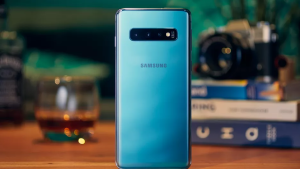– Before we mention which Samsung galaxy camera settings to use we all know that If you want to take great selfies that make your social media followers do twice as much, then the Samsung Galaxy smartphone is the perfect choice.
With high-resolution cameras, intelligent image optimization and powerful editing tools, Samsung phones provide all the features you need to be a great selfie shooter.
However, like everything, Samsung phones are not perfect.
This is especially true of their front cameras, which are often not as good as the main rear cameras (though this phenomenon is not unique to Samsung).
Not everyone likes the standard image processing used by smartphones to produce the final result.

In particular, Samsung phones with computer photography can go a bit too far in terms of sharpness, especially not to mention overall color saturation, which can completely destroy skin tones.
Luckily, there are a few things you can do to take better selfies on your Samsung Galaxy device.
We’ll show you which settings to convert, plus some other helpful tips to help you perform at your best.
Samsung Galaxy Camera Settings To Use
First of all, if you’re not satisfied with the default selfie Samsung galaxy camera settings on your Samsung phone, you can always adjust them. Several options are available to fine-tune your photo before you take it.
You can change the resolution of your photos as well as toggle features like HDR (high dynamic range).
From there, you’ll find all sorts of options for editing your images until they’re perfect.

Choose “natural” if you want to make sure the camera captures your skin tones more faithfully without introducing its own type of over-processing.
Then, if you want, you can use any of the included filters and image editing tools to get the exact look you want.
Make Sure Your Lenses Are Clean

If you feel that the colors in your selfies are muted or appear a bit blurry, you need to make sure that the front camera sensor is completely clean and free of obstructions.
Fingerprints are especially harmful, as the oil on your hands and face can coat the glass just enough to splash away.
This can be hard to notice with the naked eye, but chances are your lenses aren’t clean if you’ve been using your phone all day.
Especially for your most important moments, it’s always a good idea to have a microfiber cloth ready to wipe your camera off before shooting.
If you don’t have one, you can still use your shirt, but be aware that the hard material of the garment can cause minor scratches.
With a clean sensor, you’ll eliminate any diffraction, blooms, haze, and gradations that can make or break any photo.
This trick works for both front and rear cameras, so keep that in mind if you want to take a quick shot and feel like everything looks a bit out of the ordinary.
Try Using The Rear Camera

Most smartphones have a dedicated selfie camera, so what does it mean to use the rear camera for selfies?
As we mentioned earlier, the front-facing selfie camera of most smartphones tends to perform much worse than the one on the back. If you want to take the best selfies, rotating your phone could be the key.
The only problem with using the rear camera for selfies is that you won’t be able to see what the scene looks like in real time (unless you’re using a Galaxy Z Flip).
This makes it harder to check your composition and ensures that you (or anyone else you want to include) is fully framed in the photo.
Maybe you can fix that with a mirror, but who has time to go through all that hassle to take a selfie?
If you’re going to use the wide-angle sensor that’s the surest way to make sure to include everything you want in the scene, but be aware that most wide-angle cameras suffer from geometric distortion which can make some part of your face or body that looks weird.
Luckily, you can fix this problem with a number of editing tools available right on your smartphone, some of which are built-in.
